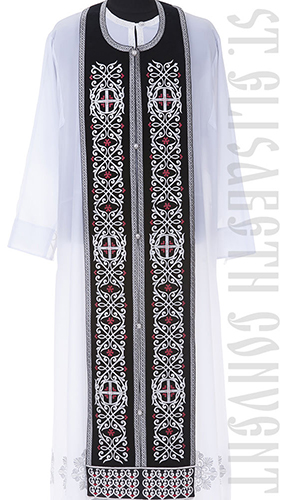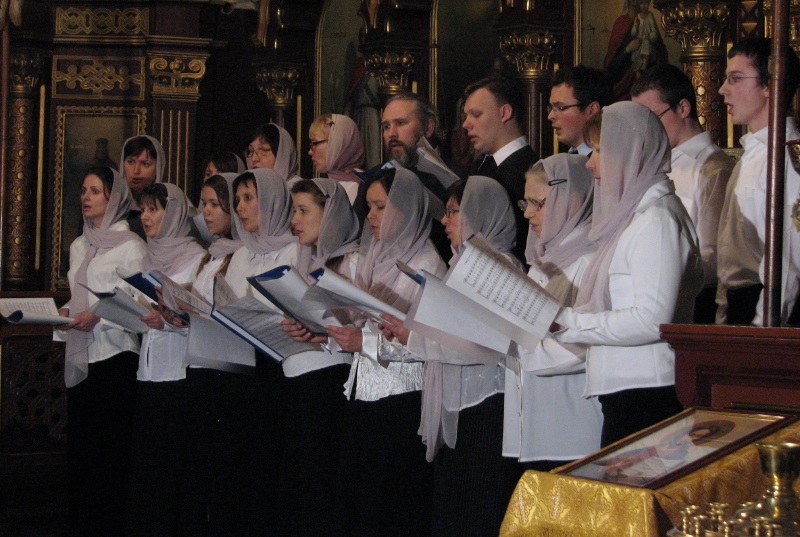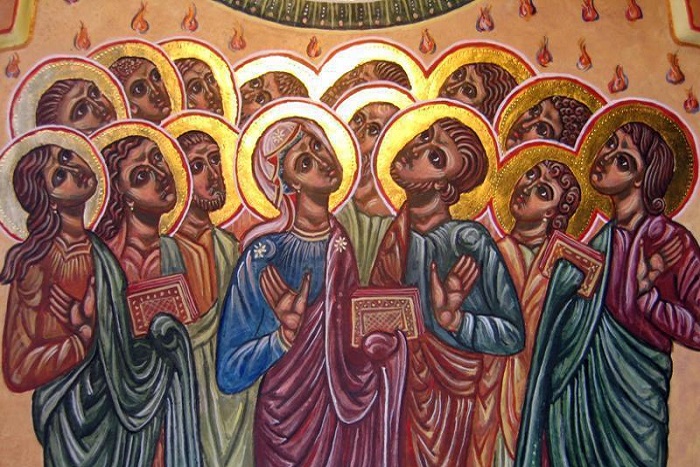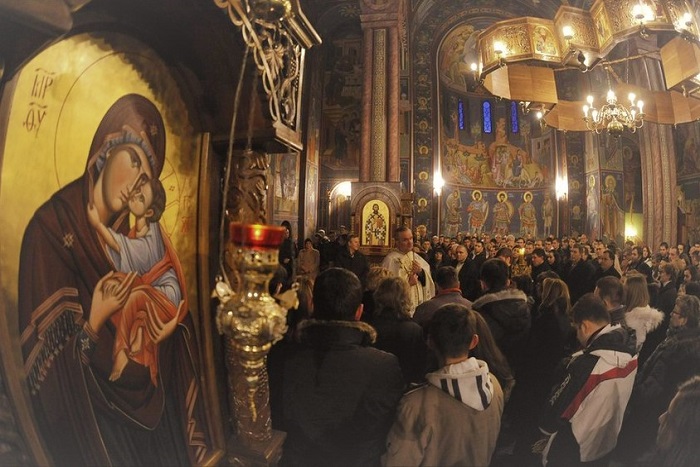
One of the main attributes of an Orthodox priest during a divine service is the epitrachelion. It is worn during all sacraments and ceremonies. What is the historical background of this liturgical item and its symbolic meaning?
The Prototype of Epitrachelion in Antiquity
The origin of the epitrachelion and the orarion remains controversial. Historians have no definitive opinion as to why they appeared in the worship of the early Church and what served as their prototypes. It is believed that the prototype of the orarion and therefore of the epitrachelion was the scarf invented by Emperor Aurelian (270-275), which was to be used by people to wave in theaters and circuses. Such a thought is absolutely out of touch with the meaning of a deacon’s ministry and Christian worship, which have nothing in common with the amusement of antiquity. More plausible is the assumption that the precursor of the orarion was a special ceremonial scarf-cloak (pallium), which was worn by the emperor’s entourage while carrying out their duties. This cloak was worn on the shoulder, covered the chest and back and was fastened with a clasp on the other shoulder. Gradually such an item of clothing evolved into a narrower piece of fabric, which emphasized its decorative edge (lat. “Ora” — “edge”). This type of official uniform is very similar to the orarion, which deacons began to use while performing their liturgical duties.
History and Meaning
The liturgical tradition did not distinguish between the epitrachelion and the orarion initially, considering it to be the same thing. An epitrachelion is a long strip of fabric worn around a priest’s neck (Greek επιτραχήλιον — worn around the neck) and suspended on the chest on both ends. The ancient Byzantine priestly ordination ritual included the bishop at the end of the rite putting the back side of the candidate’s orarion around his neck and on his right shoulder, thereby turning the orarion into the epitrachelion (Alexei A. Dmitrievsky. The Candidate for Priesthood, K., 1904. P. 97), emphasizing the fact that the gift of priestly ministry is greater than that of the deacon’s. Both ends of the epitrachelion were fastened in the center with buttons, and that is how the epitrachelion received its modern look. There are six crosses embroidered on the front of the epitrachelion: three to the left and three to the right, and there is a seventh cross on the part that surrounds the neck. This means that the presbyter may administer six Sacraments, save for the Sacrament of Holy Orders, which he had received from the bishop. When the priest puts on the epitrachelion, he kisses the seventh cross, thus expressing love and obedience to his bishop who commissioned him for this great service.
Symbolism

Due to the fact that in the early Church the epitrachelion was not distinguished from the orarion, we can consider the 22nd and 23rd Rules of the Council of Laodicea (364) regulating the use of the orarion to be the first mention of the epitrachelion. The word ‘epitrachelion’ itself is found in the eighth-century Byzantine liturgical commentary on Church History, attributed to St. Herman of Constantinople (†730) in manuscripts. This text gives the first symbolic interpretation of the epitrachelion, comparing it to the bonds of the Savior (Brightman F. Brightman. E. The “Historia Mystagogica” and other Greek Commentaries on the Byzantine Liturgy // JThSt. 1908. Vol. 9. P. 262). It is noteworthy that ante-Nikonian Sluzhebniks mention the following verse upon the putting on of the epitrachelion, which is directly related to this interpretation: “They took Jesus, and bound him… Then led they Jesus to Pontius Pilate”. There is no such verse anywhere else. St. Symeon of Thessalonica (†1429) interpreted the rite of transferring the back edge of the orarion to the priest’s chest as the laying on the priest the good yoke of Christ (see: PG. 155. Col. 262).
The rite of the Divine Liturgy by St. Philotheos I Kokkinos says that when the priest puts on his epitrachelion before the beginning of the Liturgy, he must read the prayer used to this day, “Blessed is God who pours out his grace upon his priests like the precious ointment upon the head, that ran down upon the beard, even Aaron’s beard, that went down to the skirts of his garments.” Here the epitrachelion is perceived as a symbol of grace that connects the Old and New Testament priesthood. St. Nicholas Kabasilas also understood the epitrachelion as a symbol of grace and stressed that, as it goes down the chest to the feet, it softens the heart and illuminates the whole body (SC. 4bis. P. 364).
Use
According to regulations, the epitrachelion is used in a special way during certain Sacraments and ordinances. For instance, the priest covers the connected hands of the couple with it during the Sacrament of Matrimony and then leads them around the analogion; the priest uses it to cover the head of the penitent during the Sacrament of Repentance while reading the absolution prayer; while receiving heterodox Christians in the Orthodox Church, the presbyter gives them the edge of his epitrachelion and thus leads them into the church.
Therefore, the epitrachelion is an integral part of the priest’s vestment; the Church tradition prohibits performing any sacred duties without it. However, what if you need to perform the Sacrament and you don’t have an epitrachelion? In times of persecution of the 20th century, priests used to put even a simple thread around their necks with six knots that stood for crosses and thus heard confessions in prison conditions. Later that thread was burned. This practice is understandable, but let us remember that the right and grace to perform the Sacraments is not given by the epitrachelion itself, which only symbolizes and testifies to the grace received, but the laying on of hands of the bishop and the blessing of God.



